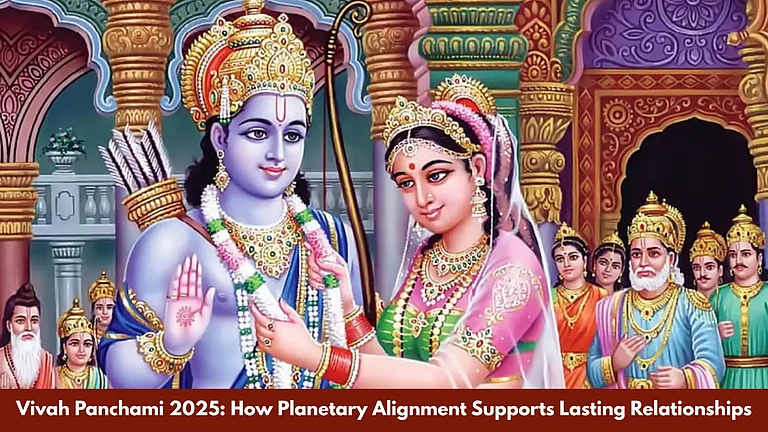Naag Panchami is a traditional Hindu festival where snakes, especially cobras, are worshipped with devotion and respect. Celebrated on the fifth day of the bright half of the lunar month of Shravan, this year the festival falls on 29 July 2025. It holds a deep religious and cultural meaning in many parts of India. But for many people, especially younger generations, a question often arises - why do we worship snakes?
The Role of Snakes in Hindu Mythology
Naag (Sanskrit word for snake) serves as a sacred and powerful entity in Hindu cultural traditions where they occupy a different status than fearful reptiles. In Hindu mythology one can frequently encounter Lord Shiva with Vasuki the snake curled around his throat. Vasuki represents the ability to control both death and fears according to Hindu belief.
Another important figure is Sheshnag, the divine serpent with a thousand heads, who provides Lord Vishnu with a resting place. These images demonstrate that snakes are linked to a higher divine power as well as the natural concepts of balance and the eternal nature of life and death.
Why Do People Worship Snakes?
People perform Naag Panchami ceremonies to demonstrate appreciation and ask for defense. The early societies of rural areas commonly discovered snakes since these creatures frequently settled near farmlands that bordered water bodies. People showed reverence to snakes during this celebration by hoping that it would both prevent snake bites and discourage snake attacks. People used this ritual as an expression of balanced coexistence with nature instead of destructive practices.
During the ceremony of Naag Panchami people believe that snakes act as messengers who bring rain and fruitful harvests particularly during the monsoon season. People attempt to gather religious protection and abundance together with personal security by making prayers and milk offerings to snakes.
How Naag Panchami Is Celebrated
Naag Panchami is observed in different ways across India. In many villages, snake charmers bring live cobras to temples or public spaces. Devotees offer milk, turmeric, flowers, and sweets to these snakes. Priests chant prayers, and people touch or look at the snakes as a symbol of blessing.
In places where live snakes are not brought, people worship snake idols made of clay, stone, or metal. In Maharashtra and parts of Karnataka, snake images are drawn on doors and walls using a special kind of red mud and worshipped with devotion. In South India, special prayers are offered in temples dedicated to snake gods, like Subramanya and Nagaraja.
Women play a big role in this festival. Many fast on this day, hoping for the wellbeing of their family members, especially brothers and children. In some regions, folk songs and dances are also performed to celebrate the occasion.
Scientific and Social Meaning
While Naag Panchami is deeply spiritual, there may also be some logical reasons behind the practice. During monsoon, snakes come out of their holes, increasing the chances of snake-human encounters. The act of worship helps people understand the need for caution and respect toward snakes.
The celebration spreads messages of compassion toward all living beings through its practice of giving snakes both food and milk either to real snakes or their statues. The tradition displays the belief that all living beings hold their specific place in existence and require appreciation.
Modern View
Today, some people question the practice of offering milk to snakes, as it is not a natural part of their diet. Ecological organizations associated with animal rights express concerns about the treatment practices of snakes during this cultural event. Templars together with their local communities relocated their rituals from live snake devotion to using symbolic snake idols in worship services.
India’s cultural and spiritual landscape celebrates Naag Panchami festival as an essential tradition despite transformations in its customs. The ritual encompasses human natural connections while teaching people to honor different living beings.
Naag Panchami functions as a festival that reminds Indians about their ancestral connection between humans and nature and divine values. Through their devotion to snakes worshippers demonstrate appreciation as well as safeguarding needs and reverence for spiritual essence across all living beings. The central principle of nature harmony continues to remain firm even though practices have evolved throughout the years.



























